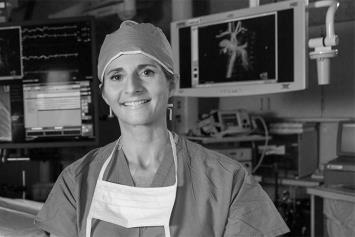Osteosarcoma
Osteosarcoma is a type of bone cancer. The earliest sign of osteosarcoma is bone pain or tenderness.
What Are Osteosarcomas?
Osteosarcomas are cancerous (malignant) tumors of the bone. They start in the cells that normally form new bone tissue (osteoblasts). These tumors are usually found near the ends of the long bones in the legs including the thigh bone (femur) and shin bone (tibia). The next most common site is the end of the thigh bone (femur) near the knee. It can also occur in other bones.
Osteosarcoma can weaken the bone and grow into the soft tissues outside of the bone. This type of cancer usually occurs in teens and young adults but can occur in younger children.
The cause of osteosarcoma is not known. Most develop in people who have no other diseases and no family history of bone cancer. In a very small number of families, siblings develop osteosarcoma.
What Are the Signs and Symptoms of Osteosarcoma?
Often the earliest sign of osteosarcoma is bone pain or tenderness. Swelling, warmth and redness may occur in the area over the affected bone. Sometimes the bone can break without trauma because it is weakened by the tumor.
Other signs and symptoms can include:
- Growing mass or lump felt through the skin
- More pain felt with lifting (with arm tumors)
- Limping (with leg tumors)
- Reduced or limited movement (with joint tumors)
How Are Osteosarcomas Diagnosed?
Your doctor will first take a detailed history and perform a physical examination. An X-ray of the bone may suggest osteosarcoma. Magnetic resonance imaging (MRI) is necessary to determine the extent of the disease. A biopsy (sample of tissue from the affected bone) is needed to make a definitive diagnosis. Biopsies can be performed in interventional radiology or in the operating room with a surgeon. A pathologist will then look at the sample under a microscope along with other testing.
Because osteosarcoma can spread to other parts of the body (metastasize), additional radiology testing is needed. A chest X-ray and chest computed tomography (CT) scan are done to detect any spread to the lungs. Additional scans such as a bone scan and positron emission tomography (PET) may be needed to test for spread of the tumor to other sites of the body. A bone scan can detect tumors in any other bones. Other radiology tests may be needed as well.
Doctors use the following terms to describe osteosarcoma and develop treatment plans:
- Localized: The tumor is limited to the bone where it started and the tissue around the tumor; it has not spread to other parts of the body.
- Metastatic: The tumor has spread from where it began to other parts of the body. The most common sites of spread are the lungs or other bones.
- Recurrent: The tumor has come back after treatment. It can recur in the same place that it started, or in another part of the body. The lungs and other bones are the most common sites of recurrent tumors.
How Are Osteosarcomas Treated?
The standard treatment of osteosarcoma is a combination of chemotherapy and surgery.
- Chemotherapy. Chemotherapy uses drugs to kill cancer cells and is used before and after surgery. Most of the time, chemotherapy is the first treatment for osteosarcoma and is done before and after surgery. The type, amount and how often the chemotherapy is done is decided by the oncologist (cancer doctor). In addition to killing the cancer cells, chemotherapy drugs sometimes also affect healthy cells (such as the cells that make hair and line the stomach and intestines) causing side effects.
- Surgery. The type of surgery depends on the tumor. An MRI test is repeated before surgery to help the surgeons plan their treatment. A piece of the bone with the tumor may be replaced with a piece of another bone or with a metal bone replacement implant, this is called “limb sparing” surgery. If possible, a custom implant that grows with the child can be used. Another possible surgery is amputation (removing) of the affected leg or arm. An amputation of the affected limb may be done when limb sparing is not possible because of the size and location of the tumor. Your child’s care team will determine the best surgical approach for your child.
Your child will have follow-up appointments with an oncologist and a musculoskeletal oncology surgeon. These doctors will monitor your child's progress and watch for side effects of the treatment. X-rays, PET and CT scans are done at times to check for spread of the disease.



